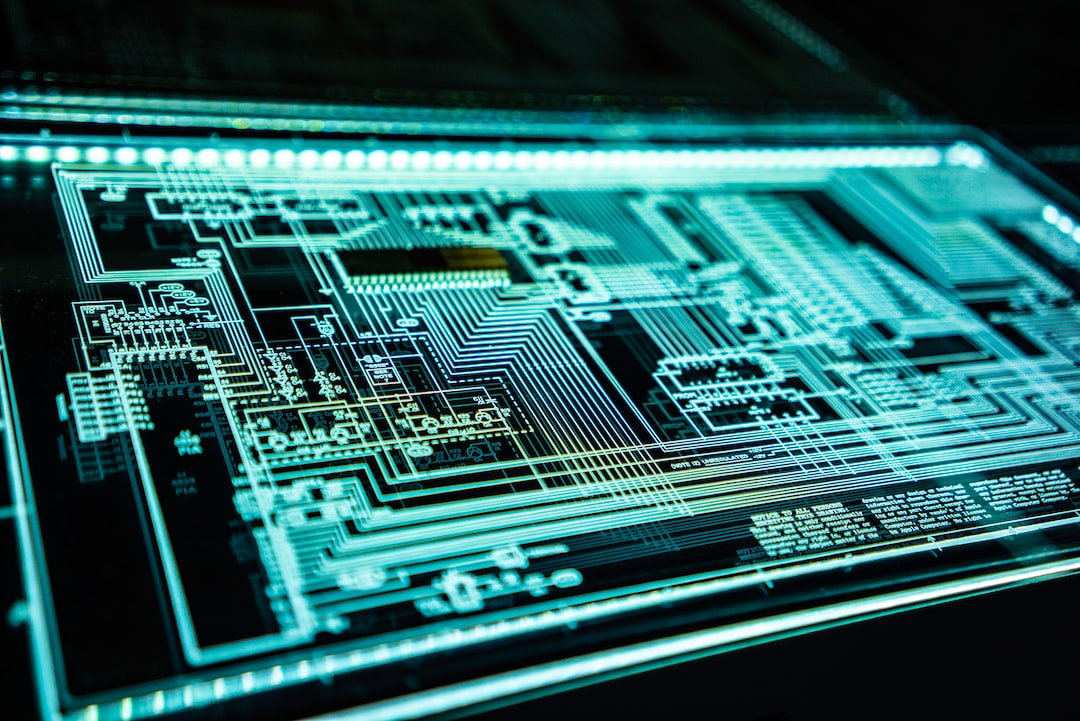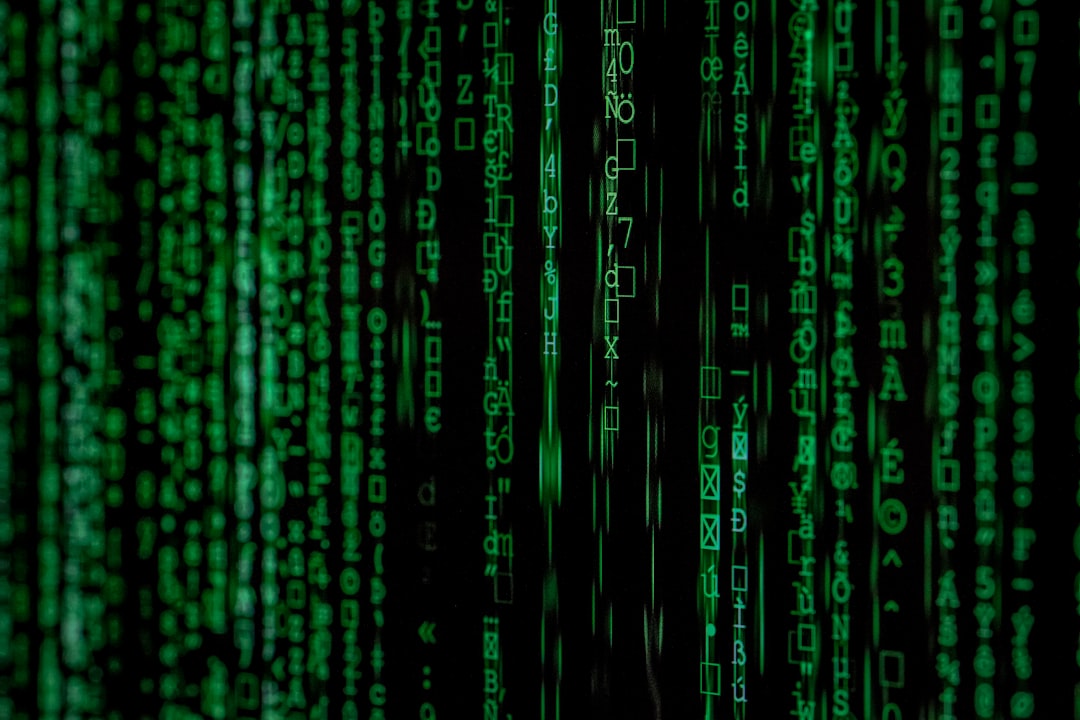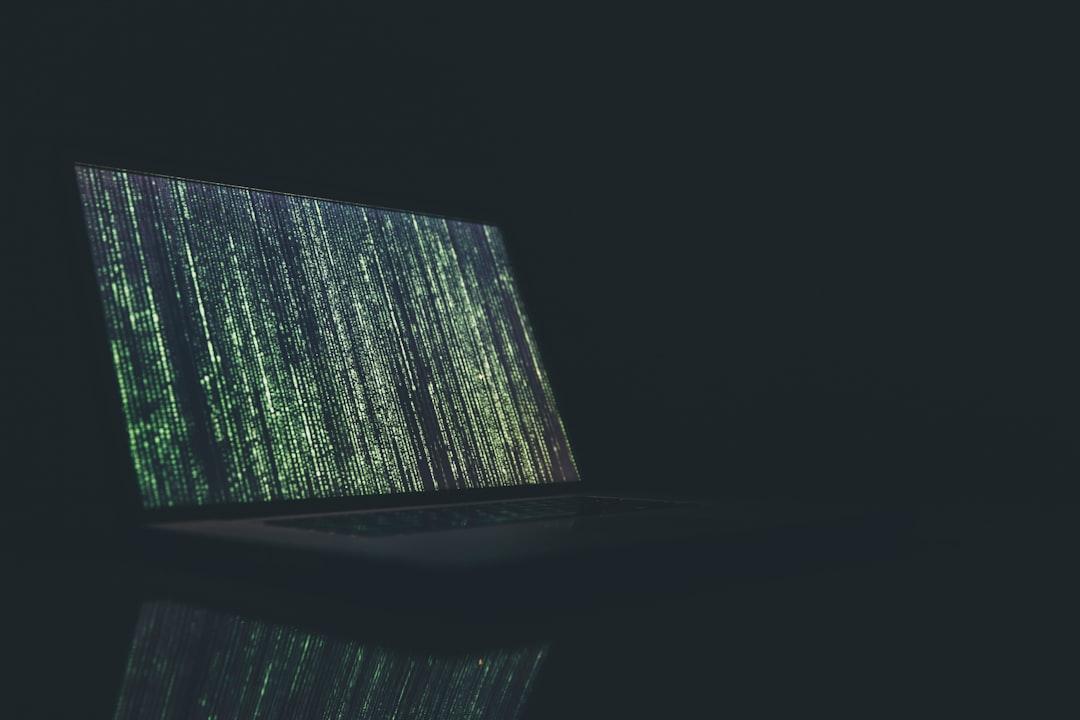In recent years, the field of cybersecurity has witnessed a rapid evolution with the emergence of artificial intelligence (AI) technologies. As organizations across various industries grapple with the escalating threat landscape, AI has emerged as a powerful ally in the ongoing battle against cybercrime. This blog post explores the profound impact of AI on cybersecurity and delves into its various applications and implications.
With the proliferation of connected devices and the ever-increasing volume of sensitive data being generated, traditional cybersecurity measures have struggled to keep pace with the sophistication and scale of modern cyber threats. This has necessitated the adoption of innovative approaches to fortify digital defenses and safeguard critical information.
Artificial intelligence, with its ability to analyze vast amounts of data and identify patterns, has emerged as a game-changer in the realm of cybersecurity. By leveraging machine learning algorithms, AI systems can autonomously detect and respond to potential threats in real-time, significantly enhancing threat detection and prevention capabilities.
One of the key advantages of AI in cybersecurity is its ability to analyze data from multiple sources simultaneously. By aggregating data from network logs, user behavior, system vulnerabilities, and threat intelligence feeds, AI-powered systems can gain a comprehensive understanding of the current threat landscape. This holistic approach enables organizations to proactively identify potential vulnerabilities and take preemptive measures to mitigate risks.
Moreover, AI has revolutionized the field of automated response systems. Traditionally, cybersecurity teams faced significant challenges in keeping up with the speed at which cyberattacks unfold. Manual response processes often proved inadequate, leaving organizations vulnerable to prolonged breaches and data loss. However, with AI-driven automated response systems, organizations can now respond to threats at machine speed, effectively minimizing the impact of cyberattacks.
While the benefits of AI in cybersecurity are undeniable, it is crucial to consider the ethical implications and potential risks associated with its implementation. As AI systems become more autonomous, there is a growing concern regarding their potential to make erroneous decisions or exhibit biased behavior. Striking the right balance between human oversight and AI automation is essential to ensure the responsible and ethical use of these technologies.
Furthermore, the collaboration between AI and human analysts is crucial for achieving optimal cybersecurity outcomes. While AI excels in processing vast amounts of data and identifying patterns, human analysts possess the contextual understanding and intuition necessary to make informed decisions. By combining the strengths of both AI and human analysts, organizations can create a formidable defense against cyber threats.
In conclusion, the rise of artificial intelligence in cybersecurity has revolutionized the way organizations protect themselves against cyber threats. Enhanced threat detection and prevention, advancements in automated response systems, and the collaboration between AI and human analysts are driving significant improvements in cybersecurity capabilities. However, it is imperative to tread cautiously, considering the ethical considerations and potential risks associated with the widespread adoption of AI in this domain. By harnessing the power of AI while maintaining human oversight, organizations can forge a resilient defense against the ever-evolving threat landscape.
The Rise of Artificial Intelligence in Cybersecurity
As the digital landscape continues to evolve at an unprecedented pace, so does the sophistication of cyber threats. Traditional cybersecurity measures alone are no longer enough to combat the ever-growing complexity and scale of attacks. This has led to a surge in the adoption of artificial intelligence (AI) in the field of cybersecurity. Harnessing the power of AI, organizations are now able to enhance their threat detection and prevention capabilities, automate response systems, and collaborate with human analysts for more effective cybersecurity measures.
AI has emerged as a game-changer in the realm of cybersecurity due to its ability to analyze vast amounts of data in real-time, identify patterns, and adapt to evolving attack techniques. By leveraging machine learning algorithms, AI systems can continuously learn and improve their ability to detect and mitigate threats. This has significantly enhanced the speed and accuracy of threat detection, enabling organizations to stay one step ahead of cybercriminals.
One of the key advantages of AI in cybersecurity is its ability to detect threats that may go unnoticed by traditional security measures. Unlike humans, who are limited by their cognitive abilities and can only process a certain amount of information at a time, AI can analyze massive volumes of data from various sources simultaneously. This allows for the identification of subtle indicators and anomalies that could potentially indicate an ongoing or imminent attack.
Furthermore, AI-driven automated response systems have revolutionized incident response in cybersecurity. Traditionally, cybersecurity teams were burdened with the tedious task of manually investigating and mitigating threats. This not only consumed valuable time but also left room for human error. With AI-powered automated response systems, organizations can now respond to threats in real-time, minimizing the impact of attacks and reducing the time required to neutralize them. These systems can autonomously execute predefined actions, such as isolating compromised systems, blocking malicious IP addresses, or quarantining suspicious files, thereby thwarting attacks before they can cause significant damage.
While the rise of AI in cybersecurity brings immense benefits, it also raises ethical considerations and potential risks. As AI systems become more autonomous and make decisions that impact security measures, ensuring their accountability and transparency becomes crucial. It is essential to establish regulations and guidelines that govern the use of AI in cybersecurity to prevent misuse or unintended consequences.
Another challenge lies in the collaboration between AI and human analysts. While AI can process vast amounts of data and detect threats with remarkable accuracy, human expertise and intuition are still invaluable in understanding complex attack techniques, assessing risks, and making critical decisions. Therefore, finding the right balance between AI automation and human intervention is vital to maximize the effectiveness of cybersecurity defenses.
The rise of artificial intelligence in cybersecurity has revolutionized the way organizations defend against cyber threats. Enhanced threat detection and prevention, advancements in automated response systems, and the collaboration between AI and human analysts have significantly bolstered the cybersecurity landscape. However, it is imperative to address ethical considerations and potential risks associated with the use of AI in cybersecurity. By harnessing the power of AI while ensuring responsible implementation, organizations can stay ahead in the ongoing battle against cybercriminals.
The rise of artificial intelligence in cybersecurity has revolutionized the way organizations defend against cyber threats.
Enhanced Threat Detection and Prevention
In the ever-evolving landscape of cybersecurity, the rise of artificial intelligence (AI) has brought forth a multitude of benefits. One of the most significant advancements is the enhanced threat detection and prevention capabilities that AI-powered systems offer. With the increasing sophistication of cyber threats, traditional security measures often fall short in detecting and responding to emerging risks. However, AI has emerged as a powerful tool that can significantly bolster our defenses.
AI algorithms have the ability to analyze vast amounts of data, including network traffic, user behavior, and system logs, at an unprecedented speed and accuracy. By leveraging machine learning techniques, these systems can quickly identify patterns, anomalies, and indicators of compromise that may go unnoticed by human analysts. This allows for early detection of potential threats, enabling organizations to take proactive measures to mitigate risks.
Moreover, AI-powered threat detection systems continuously learn and adapt to new threats and attack vectors. They can autonomously update their knowledge base, incorporating the latest threat intelligence and security best practices. This iterative learning process ensures that the system remains up-to-date and effective in identifying emerging threats.
Another significant advantage of AI in threat detection is its ability to analyze data in real-time. Traditional security measures often rely on manual analysis, which can be time-consuming and prone to human error. AI systems, on the other hand, can process and analyze data in real-time, enabling organizations to respond swiftly to potential threats and minimize the impact of a cyberattack.
Furthermore, AI-powered systems can leverage various techniques, such as behavioral analysis and anomaly detection, to identify suspicious activities that may indicate a potential security breach. By continuously monitoring network traffic and user behavior, AI can detect deviations from normal patterns and raise alerts when unusual activities are detected. This proactive approach ensures that organizations are better equipped to prevent and mitigate cyber threats before they cause substantial damage.
While AI has undoubtedly revolutionized threat detection and prevention, it is important to acknowledge the limitations and potential risks associated with its implementation. False positives, for instance, can be a challenge, as AI systems may flag benign activities as potential threats. Striking the right balance between sensitivity and specificity is crucial to avoid overwhelming security teams with an influx of false alarms.
Additionally, AI-powered systems heavily rely on the quality and accuracy of the data they analyze. If the input data is compromised or manipulated, it can lead to inaccurate threat assessments and potentially render the system ineffective. Therefore, ensuring the integrity and security of the data sources is paramount to maximize the efficiency and reliability of AI-powered threat detection systems.
The integration of AI in cybersecurity has significantly enhanced threat detection and prevention capabilities. By leveraging AI algorithms’ speed, accuracy, and ability to analyze vast amounts of data, organizations can stay one step ahead of cyber threats. However, it is crucial to address the potential risks and limitations associated with AI implementation to ensure its effectiveness in safeguarding digital assets and sensitive information.
Additionally, AI-powered systems heavily rely on the quality and accuracy of the data they analyze.
Advancements in Automated Response Systems
As the field of cybersecurity continues to evolve, one area that has seen significant advancements is in automated response systems. These systems leverage artificial intelligence (AI) technologies to detect and respond to threats in real-time, providing organizations with a more efficient and effective means of defending against cyber attacks.
Gone are the days when cybersecurity teams had to manually analyze and respond to every security incident. With the help of AI, automated response systems can now quickly analyze vast amounts of data, identify potential threats, and take immediate action to mitigate risks. This not only saves valuable time and resources but also enhances the overall security posture of organizations.
One of the key advantages of automated response systems is their ability to detect and respond to threats at a speed and scale that would be impossible for human analysts alone. These systems can continuously monitor network traffic, log files, and other data sources, identifying patterns and anomalies that may indicate a potential security breach. By leveraging machine learning algorithms, they can also adapt and learn from new threats, constantly improving their ability to detect and respond to evolving cyber attacks.
Furthermore, automated response systems can execute predefined response actions without human intervention, such as blocking suspicious IP addresses, isolating compromised systems, or even initiating incident response processes. This not only allows organizations to respond to threats in real-time but also reduces the risk of human error and ensures consistent and timely actions are taken.
Another significant advancement in automated response systems is the integration of threat intelligence feeds. These feeds provide real-time information about emerging threats and vulnerabilities, allowing automated response systems to proactively defend against new attack vectors. By leveraging AI algorithms to analyze and correlate threat intelligence data with existing security data, these systems can identify potential risks and take proactive measures to prevent attacks before they happen.
However, it is important to note that automated response systems are not without their challenges and limitations. While they can greatly enhance threat detection and response capabilities, they still require human oversight and validation. AI technologies are not infallible and can sometimes generate false positives or overlook subtle indicators of a sophisticated attack. Therefore, it is crucial for organizations to have human analysts in the loop to review and validate the actions taken by automated response systems.
Additionally, ethical considerations must be taken into account when implementing automated response systems. The use of AI in cybersecurity raises questions about privacy, accountability, and the potential for unintended consequences. Organizations must carefully consider the ethical implications of relying solely on automated systems to make critical security decisions and ensure that appropriate safeguards are in place to protect the rights and interests of individuals.
Advancements in automated response systems powered by AI have revolutionized the way organizations detect and respond to cyber threats. These systems offer faster and more accurate threat detection, real-time response capabilities, and integration with threat intelligence feeds. However, human oversight and ethical considerations are necessary to ensure the reliability and responsible use of these technologies in cybersecurity.
The use of AI in cybersecurity raises questions about privacy, accountability, and the potential for unintended consequences.
Ethical Considerations and Potential Risks
With the rapid advancement of artificial intelligence (AI) in the field of cybersecurity, there are various ethical considerations and potential risks that need to be carefully examined. While AI offers immense potential in enhancing threat detection and response, it also raises important questions about privacy, bias, and accountability.
One of the key ethical concerns surrounding AI in cybersecurity is privacy. As AI systems gather and analyze vast amounts of data, there is a risk of infringing upon individuals’ privacy rights. It is crucial to establish robust protocols and safeguards to ensure that personal data is protected and used ethically. Additionally, organizations must be transparent about the data they collect and how it is utilized to build trust with their users.
Another significant consideration is the potential for bias in AI algorithms. AI systems rely on historical data to make predictions and decisions. If the data used to train these systems is biased or reflects societal inequalities, it can perpetuate and amplify those biases. This can have serious consequences, particularly in cybersecurity, where biased decisions can lead to unfair targeting or exclusion of certain individuals or groups. It is essential to regularly audit and monitor AI systems to identify and mitigate bias.
Furthermore, the accountability of AI systems is a crucial ethical concern. As AI becomes more autonomous and capable of making decisions without human intervention, it becomes challenging to attribute responsibility for any negative outcomes. Organizations must establish clear lines of accountability and ensure that there are mechanisms in place to address any harm caused by AI systems. This includes designing AI systems with built-in mechanisms for human oversight and intervention.
In addition to ethical considerations, there are also potential risks associated with the use of AI in cybersecurity. One significant risk is the possibility of AI systems being compromised or manipulated by malicious actors. If hackers gain control over AI systems, they could potentially exploit them to launch cyber attacks or manipulate their outputs to deceive human analysts. This highlights the need for robust security measures to protect AI systems from unauthorized access.
Another risk is the overreliance on AI systems, which can lead to complacency among human analysts. While AI can greatly enhance threat detection and response, it is essential to maintain a balance between automation and human expertise. Human analysts play a critical role in contextualizing and interpreting AI-generated insights, and their judgment and intuition cannot be fully replaced by machines.
To address these ethical considerations and potential risks, it is crucial to establish comprehensive guidelines and regulations for the development and deployment of AI in cybersecurity. Collaboration between policymakers, industry experts, and researchers is essential to ensure that AI systems are designed and used in a responsible and ethical manner. Additionally, ongoing research and development are necessary to continually improve the transparency, fairness, and accountability of AI systems.
While the rise of AI in cybersecurity offers immense potential, it also brings forth ethical considerations and potential risks that must be carefully addressed. Privacy, bias, accountability, and the potential for malicious exploitation are among the key concerns that need to be navigated. By proactively addressing these issues and fostering collaboration between AI and human analysts, we can harness the power of AI while upholding ethical standards and minimizing risks in the ever-evolving landscape of cybersecurity.
Additionally, ongoing research and development are necessary to continually improve the transparency, fairness, and accountability of AI systems.
Collaboration between AI and Human Analysts
As we delve deeper into the realm of artificial intelligence (AI) in cybersecurity, it becomes increasingly evident that collaboration between AI and human analysts is the key to achieving the highest level of protection against evolving threats. While AI systems have proven to be incredibly efficient in detecting and preventing cyber attacks, they still lack the contextual understanding and intuition that human analysts possess. This is where the power of collaboration comes into play.
AI systems excel at processing vast amounts of data in real-time, identifying patterns, and detecting anomalies. They can continuously monitor networks, analyze logs, and identify potential threats with unmatched speed and accuracy. However, these systems often struggle when it comes to understanding the nuances and context behind the data they analyze. They may flag certain activities as suspicious, but it takes the expertise of human analysts to determine whether those activities are truly indicative of a cyber attack or simply a false positive.
Human analysts, on the other hand, bring a wealth of knowledge and experience to the table. They are skilled at interpreting complex data, understanding the motivations and tactics of threat actors, and making informed decisions based on their expertise. While human analysts may not possess the same speed and efficiency as AI systems in processing data, their ability to think critically and analyze information holistically is invaluable in the realm of cybersecurity.
By combining the strengths of AI systems and human analysts, organizations can create a powerful defense against cyber threats. AI can assist human analysts by quickly sifting through large volumes of data, flagging potential threats, and providing them with the necessary information to make informed decisions. This allows human analysts to focus their efforts on investigating and responding to the most critical threats, leveraging their expertise to analyze the context and make accurate determinations.
Furthermore, collaboration between AI and human analysts enables a continuous feedback loop that enhances the capabilities of both parties. As human analysts provide feedback and insights to AI systems, these systems can learn and adapt, improving their accuracy and efficiency over time. Similarly, AI systems can augment the capabilities of human analysts by providing them with real-time threat intelligence, automating repetitive tasks, and freeing up their time to focus on more strategic initiatives.
However, it is important to note that collaboration between AI and human analysts is not without its challenges. Effective collaboration requires clear communication channels, well-defined roles and responsibilities, and a mutual understanding of each other’s strengths and limitations. Organizations must invest in training their human analysts to work effectively with AI systems and ensure that the integration of AI into their cybersecurity operations is seamless.
Collaboration between AI and human analysts is the future of cybersecurity. While AI systems bring speed and efficiency to the table, human analysts provide the critical thinking and contextual understanding necessary to combat sophisticated cyber threats. By harnessing the strengths of both AI and human analysts, organizations can build a robust defense against evolving threats and stay one step ahead of cybercriminals.
Organizations must invest in training their human analysts to work effectively with AI systems and ensure that the integration of AI into their cybersecurity operations is seamless.
Conclusion
In conclusion, the rise of artificial intelligence (AI) in the field of cybersecurity has revolutionized the way we combat cyber threats. With enhanced threat detection and prevention capabilities, advancements in automated response systems, and the collaboration between AI and human analysts, we are witnessing a new era in cybersecurity.
AI has proven to be a powerful tool in identifying and mitigating cyber risks. Its ability to analyze vast amounts of data and detect patterns that may go unnoticed by human analysts is invaluable. By leveraging machine learning algorithms, AI can continuously learn and adapt to evolving threats, providing real-time protection against sophisticated attacks.
Furthermore, the advancements in automated response systems have significantly reduced response times, enabling organizations to swiftly counteract cyber threats. AI-powered systems can autonomously respond to incidents, isolate affected systems, and even initiate countermeasures to neutralize the attack. This not only minimizes the impact of cyber incidents but also reduces the burden on human analysts, allowing them to focus on more complex tasks.
However, as we embrace the benefits of AI in cybersecurity, we must also consider the ethical implications and potential risks associated with its implementation. The use of AI raises concerns regarding privacy, accountability, and the potential for bias in decision-making algorithms. It is crucial that organizations adopt ethical frameworks and ensure transparency in their AI systems to address these concerns and maintain public trust.
Despite these considerations, the collaboration between AI and human analysts is proving to be a winning combination. While AI excels in data analysis and pattern recognition, human analysts bring critical thinking, creativity, and contextual understanding to the table. By working together, they can effectively identify and respond to complex cyber threats, leveraging the strengths of both AI and human intelligence.
As we continue to witness advancements in AI technology, it is crucial for organizations to invest in training and upskilling their workforce. Human analysts need to acquire the necessary knowledge and skills to effectively collaborate with AI systems. By fostering a culture of collaboration and embracing AI as a complement rather than a replacement, organizations can harness the full potential of AI in cybersecurity.
In conclusion, the integration of AI in cybersecurity has brought about significant advancements in threat detection and prevention, automated response systems, and the collaboration between AI and human analysts. It has transformed the way we approach cybersecurity, empowering organizations to stay one step ahead of cybercriminals. However, it is essential to address ethical considerations, mitigate potential risks, and ensure the continued collaboration between AI and human analysts for a secure and resilient cyber landscape.





